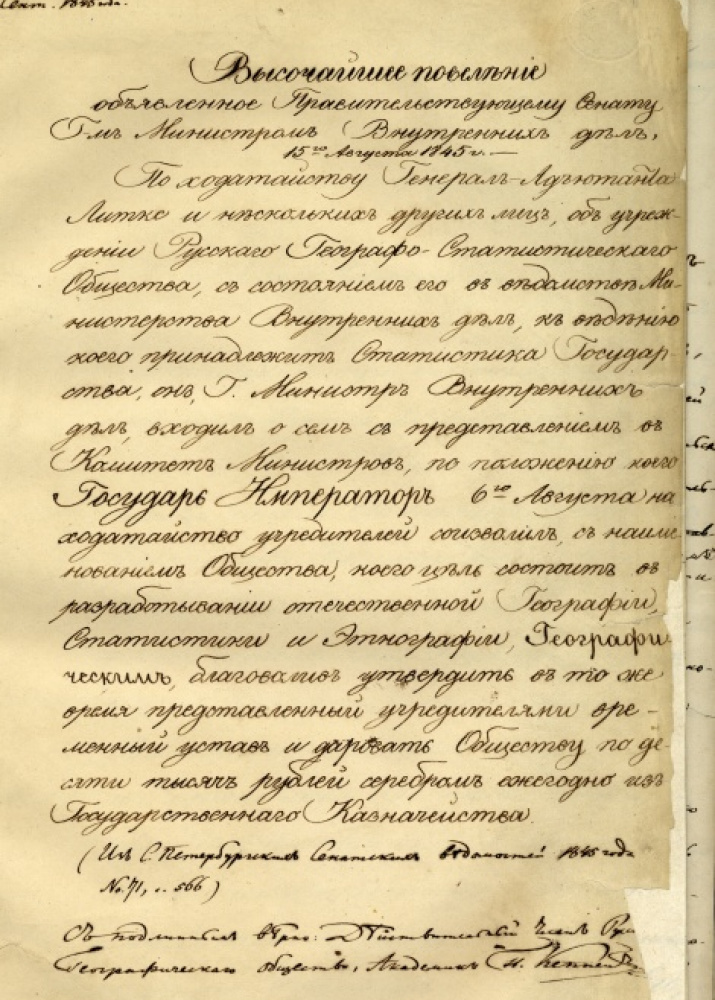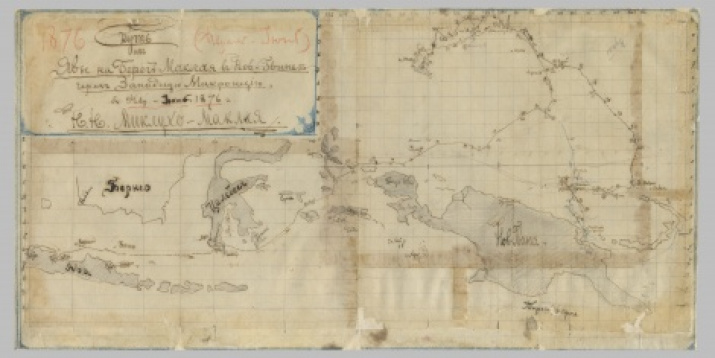The 18th of August (the 6th of August in the old style) of 1845 Nicholas the I-st laid the foundation of the history of the Russian Geographical Society. The emperor approved the project and the provisional charter of the scientific organization. The geographer Petr Semyonov Tian-Shansky wrote that the idea "to collect and direct the best young forces to a comprehensive study of their native land, found sympathy in four circles" - sailors, officers, academic scientists and representatives of various fields of the Russian science.
As early as October 1843, travelers and statisticians were gathering at the geographer and historian Peter Keppen, discussing researches and expeditions. The scientist Karl Baer advised his colleague to work out the rules of meetings, determine the number of participants.
In April 1845, at the suggestion of Baer, a dinner was organized in honor of the return of Alexander Middendorff from the expedition. Later Carl Bair recalled that at the ceremony the London Geographical Society was mentioned, wished that a similar scientific organization was created in Russia.
"The idea of the need to establish a Geographic society for a long time had been wandering in my head ... One evening we talked about this with Baer and Ferdinand Wrangel sitting with me and de fII en aiguille (word by word) made an attempt," - Admiral Fyodor Litke wrote.
Fyodor Litke quickly developed a draft statute of the Russian Geographical Society; the supporters of the organization signed the paper. Litke submitted a petition on the establishment of the Russian Geographical Society to the Minister of the Interior, Lev Perovsky. In it, the Society's objective was to "collect and disseminate, both in Russia and outside it, complete and reliable information about our fatherland with respect to geographical, statistical and ethnographic". Nicholas the I-st approved the project and appointed the Company a subsidy - 10 thousand rubles a year.
In October of 1845 a general meeting of members of the scientific organization took place. At this meeting, Litke pointed out that "the main subject of the Russian Geographical Society should be the cultivation of the geography of Russia". There were elected the heads four divisions of the Russian Geographical Society as well: the Department of General Geography was headed by Admiral Ferdinand Wrangel, Geography of Russia - astronomer Vasily Struve, Ethnography of Russia - Karl Baer, Statistics of Russia - Peter Keppen.
The Society organized its first major study of the northern Urals under the guidance of geologist Ernst Hoffmann in the year of 1847 already. The expeditions under the leadership of the Russian Geographical Society made discoveries, changed the ideas of contemporaries about nature and culture. Thus, Gombojab Tsybikov became the first scientist from Russia who managed to penetrate Central Tibet, he also made unique photographs of Lhasa, Peter Kozlov discovered the ancient city of Hara-Hoto, and Miklouho-Maclay - the customs of the Papuans of New Guinea. The Russian Geographical Society inspired the figures not only of science but also of art. In particular, the member of the Society, an artist Ivan Aivazovsky painted the picture "Ice mountains" in honor of the 50th anniversary of the brave swimming of Thaddeus Bellingshausen and Mikhail Lazarev, during which there was discovered Antarctica.
Today the Russian Geographical Society continues to follow the behests of its founders. Teachers and the volunteers are going the expeditions under the banners of the Russian Geographical Society. In different cities of the world they admire the beauty of Russia thanks to the photo exhibitions organized by the Society. Fans of geography learn a lot of new things at the lectures and master classes of the Russian Geographical Society. The scientific research is being conducted with the grant support of the Russian Geographical Society, the books are being published, and educational films are being shot as well. The youth clubs of the Society exist in 54 regions of Russia.
Discover Russia together with us!




